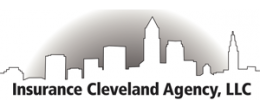No one wants to be in a car accident, but accidents can happen to anyone. So we protect ourselves and others with automobile liability insurance. If you’re injured in an accident caused by another driver, that driver’s liability insurance will usually help cover expenses you incur — unless that driver doesn’t have auto liability coverage.
Being Uninsured
If someone is injured in an automobile collision in the United States, the chances are about one in seven that the driver at fault is uninsured. However, you can ask your insurance agent to include uninsured motorist insurance in your car insurance policy. In that case you can put a claim in under your own insurance policy for uninsured motorist coverage.
What Exactly is Uninsured Motorist Coverage?
Uninsured motorist (“UM”) coverage protects you as a driver against any damage that results from another person hitting you when that other person does not have car insurance.
UMPD and UMBI: Know the Difference
There are two types of uninsured motorist coverage that you need to know about:
- Uninsured motorist property damage coverage, also known as UMPD, covers car damage in the event that the at fault driver does not have car insurance.
- Uninsured and underinsured motorist (UM/UIM) bodily injury coverage (UMBI). This pays for your injuries (not car damage) when someone with little or no insurance crashes into you.
UMBI and Medical Bills
UMBI usually pays for the following:
- Pain and suffering;
- Lost wages; and
- Medical bills.
If you’re in an auto accident caused by an uninsured motorist and you don’t have UM coverage, your health insurance will generally pay for your medical bills related to that car accident, with you being left to pay for any deductible and co-payment amounts. That can easily add up to a hefty amount if you require a hospital stay. So, UM coverage can help bridge that gap in these payments.
UM Coverage in Ohio
The State of Ohio does not require drivers to purchase UM coverage as part of their car insurance policy. Ohio requires only that insurers offer it to customers without collision coverage. However, it is important to consider having this coverage as part of your policy. As a minimum, your UM coverage should at least equal your liability coverage which, at a minimum, is $25,000.
Is “Full Coverage” Enough?
And what if you have “Full Coverage” insurance? When people talk about “full coverage” car insurance, they’re often referring to a combination of coverages that help protect a vehicle. But, there’s really no such thing as “full coverage” for your car. “Full coverage” does not mean you are fully covered in the event of a car accident. Every coverage has a set limit which the insurance company will pay up to, and nothing more.
What about Comprehensive and Collision Coverage?
If you have collision coverage, it would also pay for car damage caused by a driver without insurance or without enough coverage. In this situation, there’s really only one advantage to uninsured motorist property damage coverage: It generally has a lower deductible than collision coverage.
Conclusion
As the owner of the insurance policy, you pay extra for uninsured motorist coverage, but it’s worth it to have that protection. Uninsured motorist coverage is a relatively inexpensive coverage that you shouldn’t do without.

